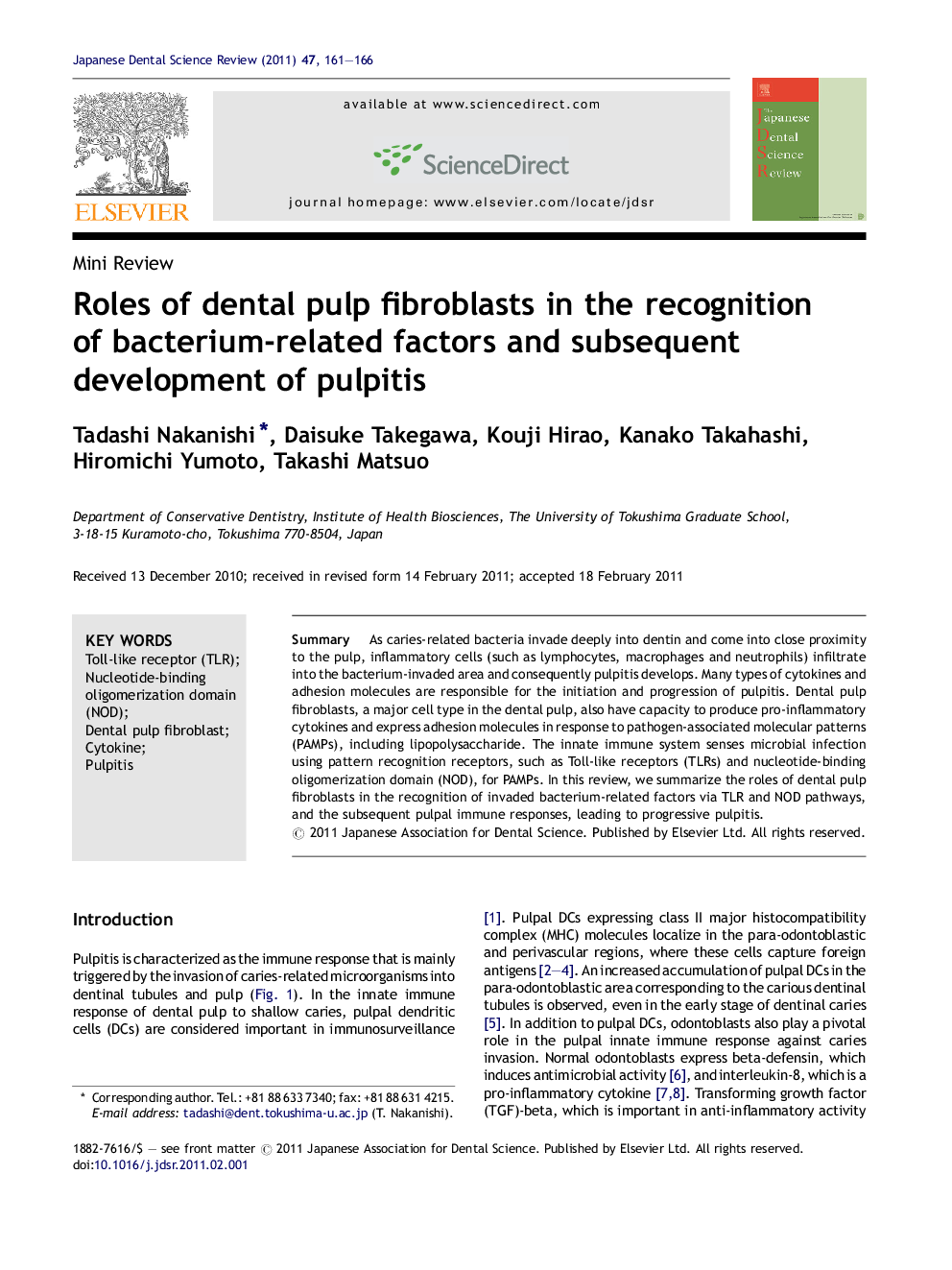| Article ID | Journal | Published Year | Pages | File Type |
|---|---|---|---|---|
| 3136902 | Japanese Dental Science Review | 2011 | 6 Pages |
SummaryAs caries-related bacteria invade deeply into dentin and come into close proximity to the pulp, inflammatory cells (such as lymphocytes, macrophages and neutrophils) infiltrate into the bacterium-invaded area and consequently pulpitis develops. Many types of cytokines and adhesion molecules are responsible for the initiation and progression of pulpitis. Dental pulp fibroblasts, a major cell type in the dental pulp, also have capacity to produce pro-inflammatory cytokines and express adhesion molecules in response to pathogen-associated molecular patterns (PAMPs), including lipopolysaccharide. The innate immune system senses microbial infection using pattern recognition receptors, such as Toll-like receptors (TLRs) and nucleotide-binding oligomerization domain (NOD), for PAMPs. In this review, we summarize the roles of dental pulp fibroblasts in the recognition of invaded bacterium-related factors via TLR and NOD pathways, and the subsequent pulpal immune responses, leading to progressive pulpitis.
